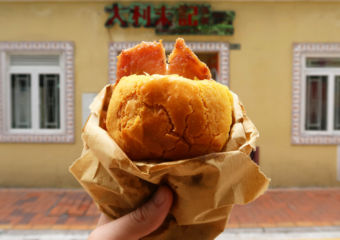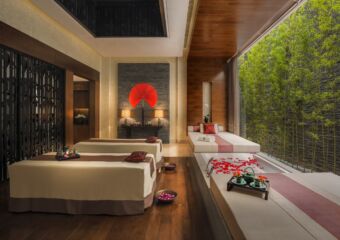Born and raised in Macau, Crystal Chan is now living between the region and New York City. At the Big Apple, she’s studying art and exhibiting her work, but also teaching at schools. Home for a few months already because of the global pandemic, she co-inaugurated a contemporary art exhibition with artist and university professor, Benjamin Hodges.
When it comes to art, Crystal is equipped with both the talent and the tools to work across different mediums. However, she likes oil painting the most. Life wasn’t always easy on her; it was her own will and effort that got her to where she is–and many other corners of the world. A traveler and a dreamer by nature, art has always been a passion of hers, even when everything seemed to pull her away from it. We visited Mountain Surrounded by Sea–Crystal and Benjamin’s exhibition–and chatted with the artist herself. Read on and find out how a was able to travel the world and discover that art was indeed her path.
So how did art come into your life?
It all started when I was young–in fact when I was in pre-school. I drew some flowers and my teacher didn’t believe me because she said “This is too nice. You’ll have to prove it,” so I drew them again in front of her and she finally believed me. It’s a weird, but very vivid memory. I participated in some drawing contests for kids and had classes after school where we learned drawing and painting. I remember telling my mom I wanted to be a painter but my family was in a difficult economic situation; they were always concerned about money, so my mom told me that it’s hard to make a living as a painter. I think that’s why I never thought I could actually be a professional artist. Upon attending my last year of high school, I wasn’t thinking about choosing arts as a graduate major; so I chose something close to it–Interior Design.
Where did you apply to for your further studies?
There was a school in Taiwan that offered free tuition. I had two goals: get out of Macau and go to a school without having to pay. Taiwan was pretty popular at the time because of all the television dramas on air–this was 2004. I didn’t know much about art at that time, but I was craving for more. I would go to the Macao Cultural Centre, which opened in 2000, and the Ox Warehouse for all their art happenings. However, the resources for art were limited in Macau. I was hoping to experience more art and culture in Taiwan. It was an awesome year where I was able to learn, see, and feel a lot of things I wouldn’t be able to otherwise.
There were dozens of bookshops, underground music places, museums, rock bands, independent movies, and music. It was very different from Macau. I also discovered the work of Egon Schiele–an Austrian Painter–at a bookshop and his work really struck me. The twisted bodies and facial expressions resonated with the pain and sadness I sometimes felt inside.
How so?
I think my work also expresses some of the same feelings. My family struggled a lot when I was growing up. I was born here but my parents were from Mainland China. I always felt a bit marginalized. This kind of marginalization I also felt as a female.
So have you always felt different?
I was always wondering “Why is this happening? Am I the one who’s wrong?”. I believed I was being punished in school because I didn’t act or think like the other kids. “You have to behave a certain way and you’re not allowed to be different,” that was a very common way of thinking. The way people looked at drawing and painting was very formal and that’s not that way I draw, which made me feel discouraged.
What art forms attracted you the most?
I bought my first camera and guitar when I was fifteen years old with the money I earned from tutoring little kids. I was always interested in different formats: dance–which I did in primary school–and singing, photography, and drawing. However, I’ve been specializing in oil painting and I think it’s the format in which I can better express myself.
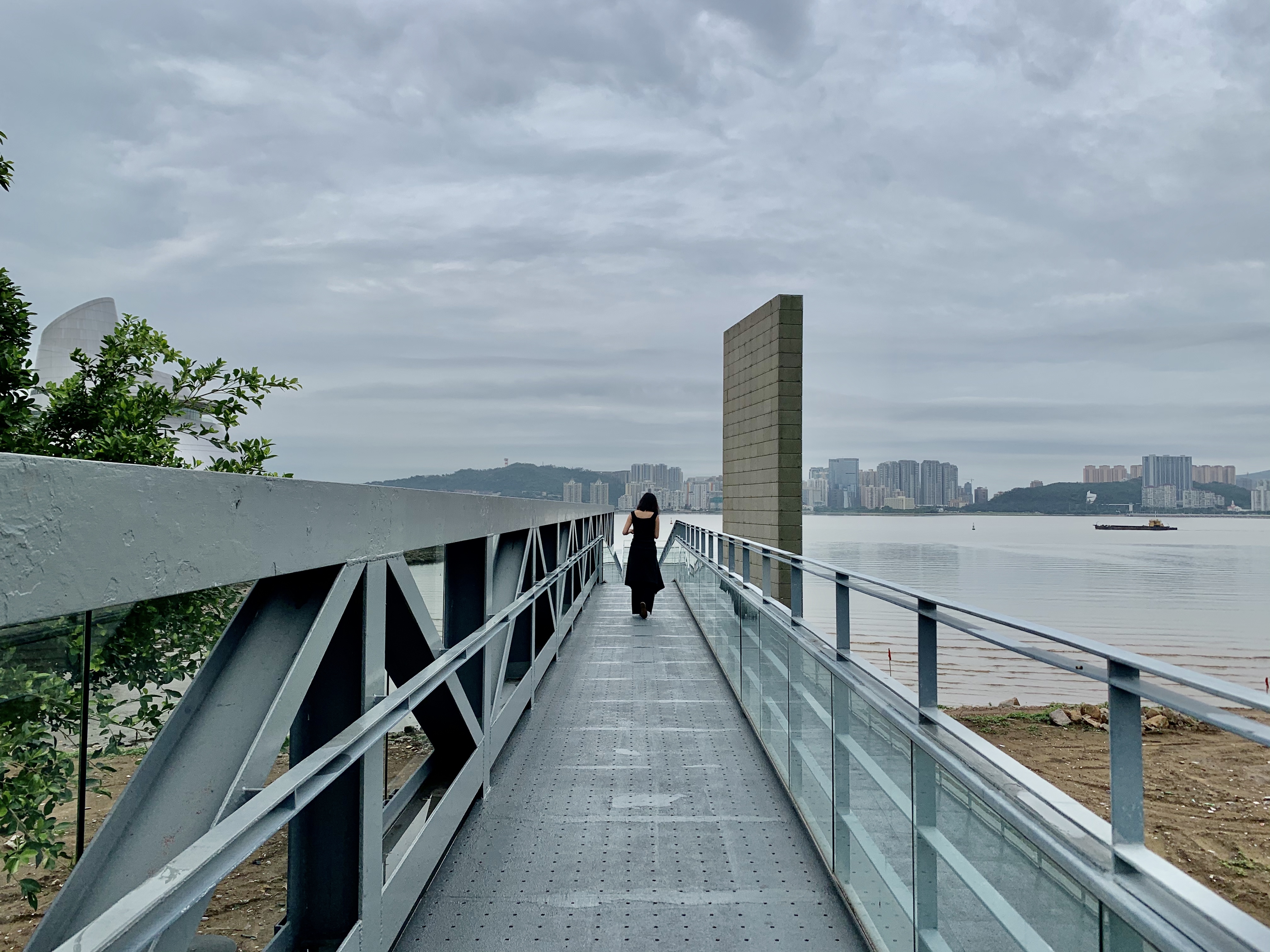
Why did you stay in Taiwan for just one year?
I enjoyed that I was in a design school, but I started realizing maybe Interior Design wasn’t the right path for me. My time in Taiwan was important for me, though I returned to Macau after one year to figure out what to do next.
What did you do next?
I studied Hotel Management at IFT (Macau Institute of Tourism) which at that time made a lot of sense because casinos were booming and I thought it might give me opportunities to work abroad in the future. In the third year, we could do an internship somewhere: most of my classmates would choose to stay in Macau, interning at a local casino or hotel. I wanted to go further and I got offers to go to Disney World in Florida and a five-star hotel in Vietnam but I ended up going to intern at a hotel in Corfu, Greece. I was more interested in Europe! It had a very Italian vibe and was really nice. I spent six months there, meeting different people and feeling new vibes. It was a new phase in my life where I realized it was good to be me, to have my own voice, and to express myself. Learning about new cultures, European cultures, where people appreciate you for being different and having an opinion, I finally realized, “You were never really wrong” (laughs).
What was the next step after the internship?
I spent two months traveling across Europe by myself, meeting new people, and couch surfing. The good thing about being young is that you’re fearless! These experiences were great. I was also in big cities–Athens, London, Paris, Venice, Florence, Rome, Budapest, Vienna, Berlin. I kept changing cities every three or four days. I met so many artists at the time, discussed different things, and took lots of photos. In Venice, I met a photographer who really encouraged me to follow my artistic path. That’s when the idea of becoming an artist came back again.
After those two months of traveling, I continued to travel back and forth between working in Macau and traveling in Europe.
When did you decide to go to New York?
In-between these jobs and travels, I was living with my boyfriend at the time and several friends who were all Portuguese. Those were very fun and crazy times in a house full of artists! They studied art, we drew a lot and had good times together. Catarina, with whom I lived, told me “You draw really well” and it really got to me. That was also the year of the Literary Festival’s first edition, with Ricardo Pinto, Hélder Beja, and myself in the organization. Ricardo knows I take a sketchbook everywhere I go where I draw things that surround me. “You should participate in the festival’s exhibition as one of the artists”, he said and that’s how I first exhibited my works: five portraits.
James Chu, from Art For All Society (AFA), saw my works and told me he didn’t know I could draw. He then told me to draw 15 new portraits, show him and join AFA after that–so I did. The association would go to art fairs in Singapore, Australia, Hong Kong, and some Chinese cities. One of them was in New York and I went with them. They all went for just three weeks, but I stayed on for longer, two more weeks alone. I explored everything by myself, it was a fantastic experience. I was kind of reckless at the time (laughs) maybe because I’m from Macau and it’s always so safe here. My works were being exhibited at an art fair there as an AFA member and I knew some people in Macau liked my work but thought it was because they knew me. Having them exhibited there and people appreciating and buying my work made me realize I might have some talent after all.
Was that when you decided to stay?
That’s when I decided I wanted to go back, but first I had to return to Macau. Then I started planning how I could go back to New York and applied for a government’s scholarship to study abroad. I was granted the scholarship and went to NYC in January, 2015. This was a great thing because I would never have been able to live and study there if it wasn’t for this help. The tuition cost MOP $300,000 and the government’s grant covered one-third of this amount; the living cost would be another MOP $200,000 for the whole year. It’s really expensive and I studied for three years.
Did you work in NY while studying?
My family supported me a bit, and I also had some saved from when I sold my artworks. This covered my first year there, but for the next two, I got a bit depressed, thinking I would have to go back to Macau without finishing my degree when my family helped me again. I also got an assistant job in a school in New York working 20 hours a week. Those three years were really important to me.
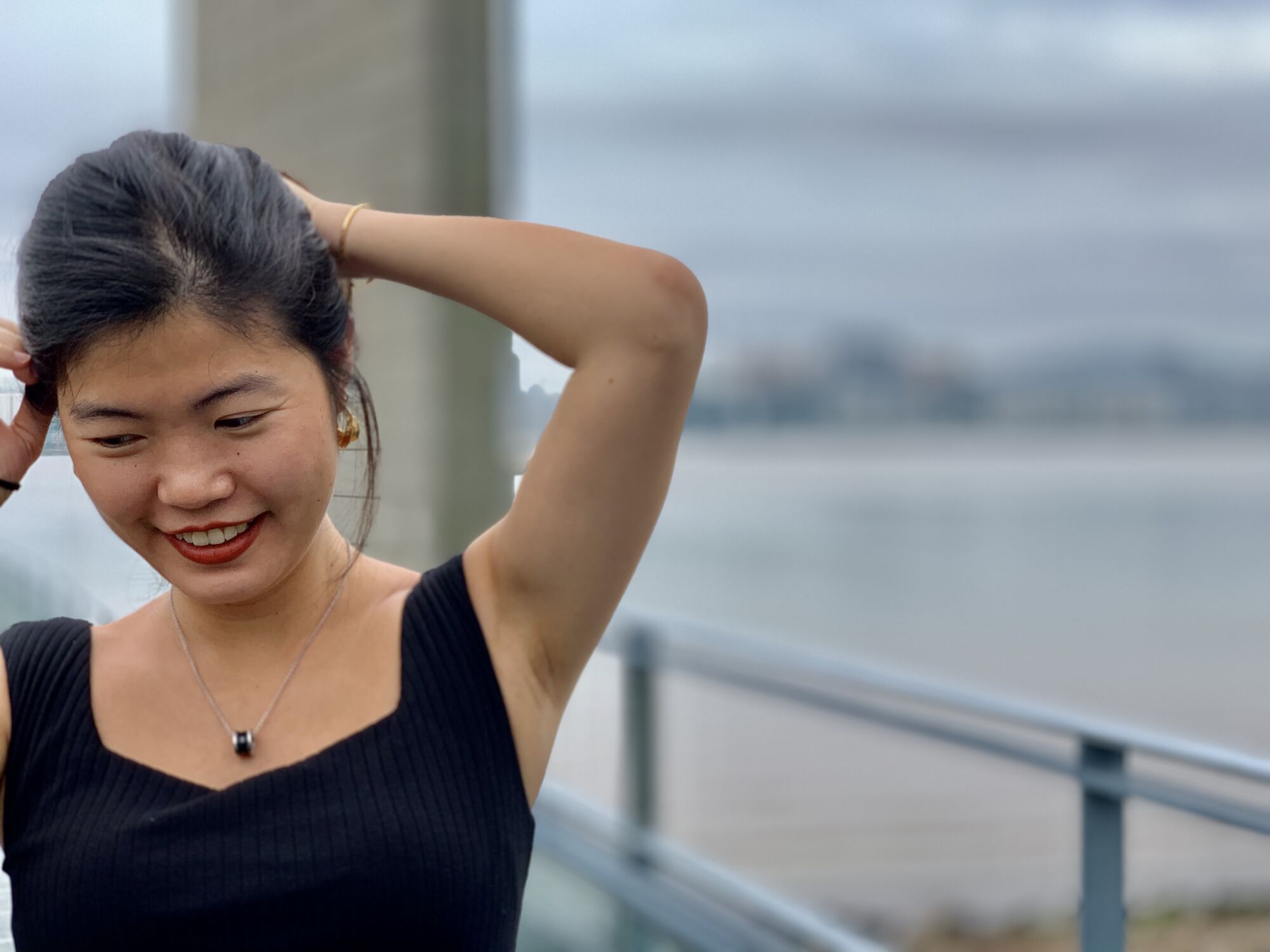
Important how?
In terms of the number of art forms one can experience, but also about gender, meaning the power of being a female. I had never thought about this before while I was growing up because it wasn’t really an issue or topic of conversation in Macau. In New York, there was a strong fight for women’s opportunities and equality. The art scene is dominated by male artists worldwide and I had never thought about that before even though there are also very talented female artists out there.
There’s a series of my works, “I Am My Own Landscape” that is related to me being allowed to look and appreciate my body. “How do I want to express my body?” was the main question. I hope I can be one of the female artists in Macau who people can look up to and recognize that women are doing amazing work. I have to make sure my voice is heard as well.
What are your preferred mediums now?
First, it was portrait drawing and now it’s oil painting. My paintings always involve an emotional gesture and depict feelings and emotions–it’s very raw and intuitive. I paint mostly landscapes, but also have some figures but they’re not very defined. I like to distance myself a bit from the paintings themselves. I don’t want people to read something specific there, to objectify the bodies in my paintings. It’s also kind of related to my childhood and how I always felt the need to distance myself from others and the world as I knew it. Painting has been my favorite medium for five years now.
What’s Mountain Surrounded by Sea, your latest exhibition, all about?
It’s a contemporary art installation that Benjamin Hodges and I worked on together. It’s the first time I’ve worked in the field of sound art. I made a sound piece that is about two hours long, which includes field recording and improvised sounds of different instruments.
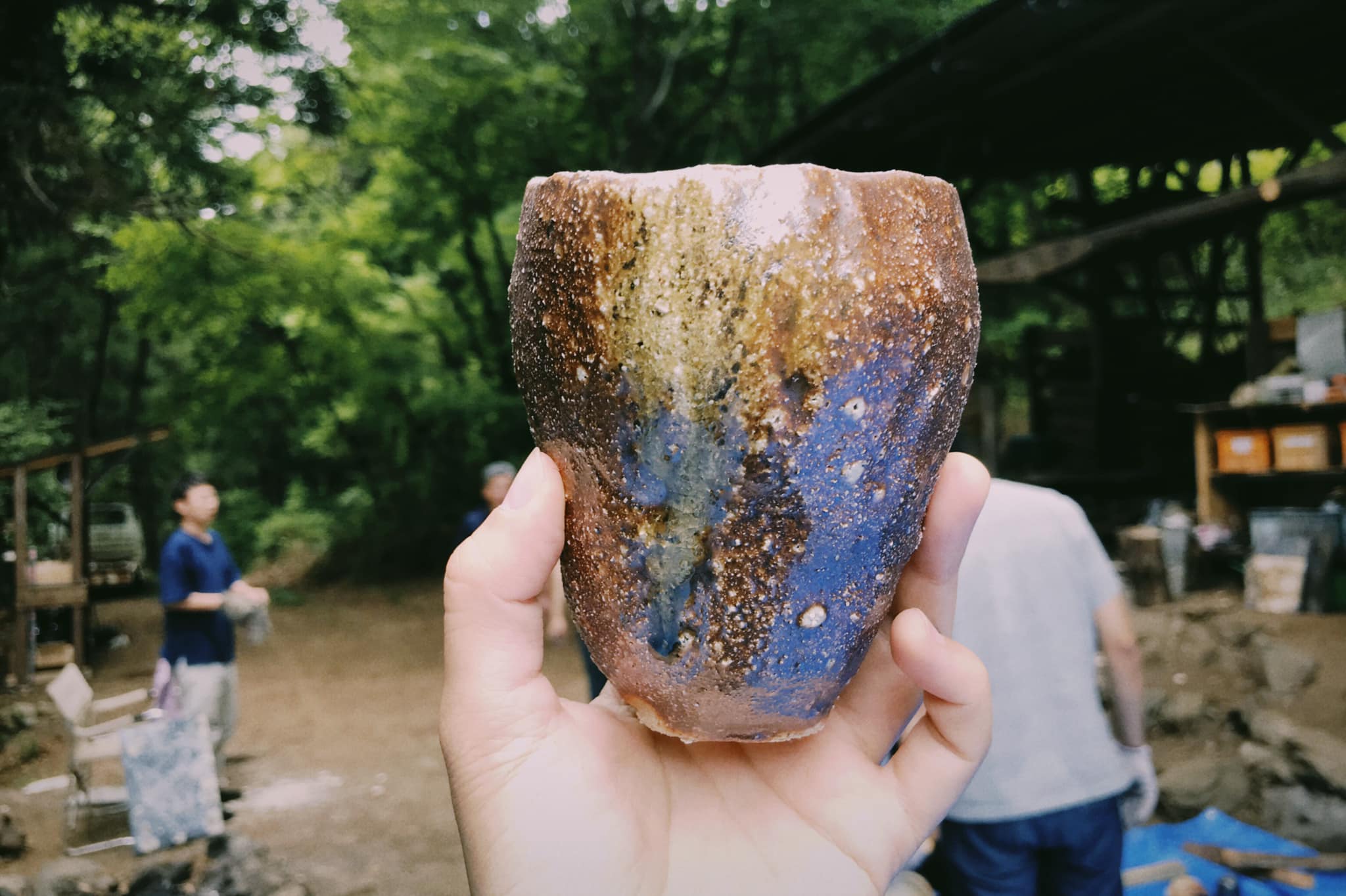
Wood firing ceramics
What have you been doing this past year?
After I finished my bachelor’s degree in New York City, I started working, first, at Takashi Murakami’s studio for a few months. It was a really interesting experience with an intense workload. I also did a lot of my own personal work. His works are made of large panels on the walls, silkscreens, and more. We mixed colors, did the silkscreens, put up the panels and everything, worked from 8:00am until midnight to 1:00am sometimes but it was super rewarding.
I then came back to Asia and spent two months doing a residence in a village three hours away from Tokyo.
Why there, in Japan?
I’m also interested in ceramics, so that’s what this residency was all about, specifically wood firing ceramics. It uses the ashes from burnt wood, which will fall back into the clay and create these amazing, different patterns all the time. That’s the reason I decided to head there where I also worked on some paintings. After that, Ben and I went to the States for holidays in Virginia and traveling around. I spent little time in Macau this past year.
Have you thought about permanently returning to Macau to live here?
I think Macau is a place where I will always return to, but also a place I wanted to leave. This is where my family is, where I grew up, and I want to contribute to the city. Because I felt rejected and lacked opportunities when I was younger, I want to help people who are in the same situation I was to succeed.
I would like to create an association or a foundation that teaches people about the importance of arts and culture in society, as well as helps people with little to no opportunities to get what they need to fulfill their dreams. However, I also love living in the USA and have thought about Europe as well (laughs), so everything’s possible. People say there’s a lack of talent in Macau, but I believe there is plenty! I think it’s very important to find value in people and find the best way to help them out; whether it’s money, a network, or even a place to start.
What about teaching?
Yes, I liked it very much. That’s also one of the possibilities if and when I return to Macau.
What are your fondest memories of Macau?
There’s one thing I always miss dearly when I’m abroad: the food! It’s the one thing that’s difficult to get when you’re living far away. I miss going to Cais 22, also eating all kinds of noodles served in small shops in Macau. I have so many favorite places for noodles in Macau! One of them is Kam Lei 金利食店. And not to forget dim sum!
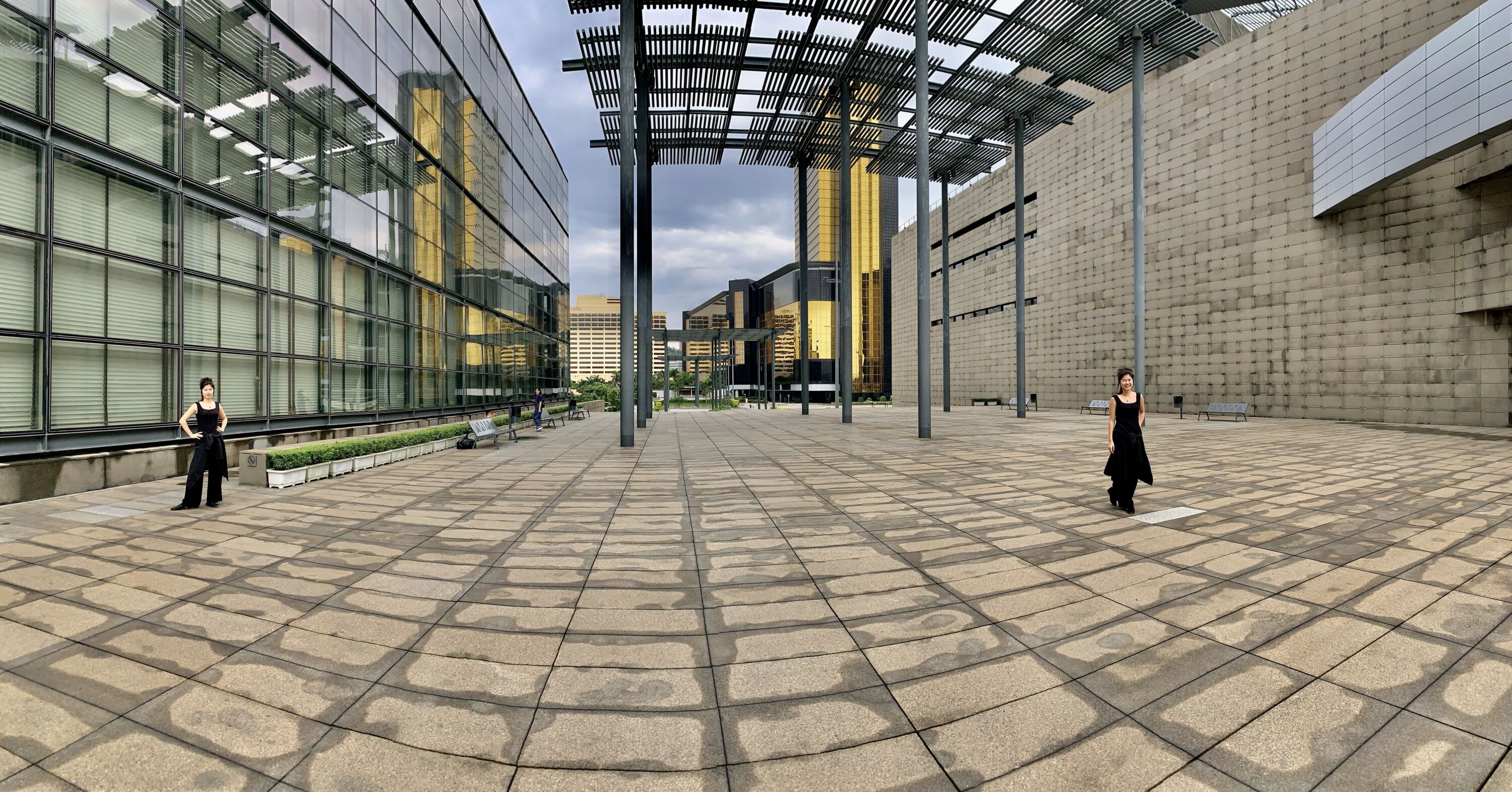
Does Macau inspire you, artistically speaking?
I think that Macau’s components and elements exist in my art in an emotional, more abstract sense. I seldomly draw something symbolic as I don’t like people making such direct interpretations. For example, in Western cultures, if you put a glass of water in a painting, it has to mean something. Maybe because my culture is a combination of both Chinese thinking and Western teachings, I prefer something more poetic. You can draw a mountain or a house, but it’s not about these elements; it’s not about what they mean, but what they make you feel. For me, it’s more about the sentiment of drawing and oil painting, the texture of the materials.
I like the Chinese approach to art: not directly saying something, just showing the feelings behind it. I can recall my past, my emotions, but I won’t draw the Ruins of St. Paul’s or some obvious element like that.
So where are the Macau elements?
Actually, almost all my paintings call out to my childhood, my upbringing. For example a humid room: I remember Macau as a humid place. Those are the elements of the city in my work. There’s a feeling of loneliness in my paintings, the way I felt when I was in Macau. Isolation is a very present element of my work and also my photos. I took photos here and there while traveling, but some–which I took in Portugal, Malaysia, and other places–still remind me of Macau as well.
Also, I didn’t have toys when I was a kid, so I had fun climbing on the rooftop, buying snacks in small shops, stuff like that. There’s a photo of a hostel I was staying at that had bunks; it reminded me of when I was little where my sister and I slept on a bunk bed. Two of us on one bed, and the other two on the other. We would also play in the long hall of our apartment building, which was economic housing. These are my elements of Macau, definitely not the touristy side of it.
Do you think Macau nowadays is a good place for artists to flourish?
I believe so, yes. There’s the potential. It’s not like when I was younger when there were just a few opportunities. We just have to learn how to connect all these dots together; how to get the casinos and hotel companies to fund art. How can we convince them they will be able to benefit from this so we have to step up the culture game and establish a strong system. Ricardo created the Literary Festival and I find this to be a great thing. We need more people like that–who starts things.
Can you tell us a bit about Mountain Surrounded by Sea?
The name is the translation of the Chinese character “island”, which literally means “mountain surrounded by sea”. We (Ben and I) got the inspiration from the land reclamation in Macau. Every time we crossed the bridge to Taipa, we see all this land being reclaimed to the sea. Also, I grew up on reclaimed land, which was an area that wasn’t very central. I never lived in a central area. Now I live in Ilha da Montanha (Henqin Island), which is, once again, a lesser-known area of the city.
For our exhibition, we decided to build a model home like a Hollywood film set. The reason that Macau keeps reclaiming land is that we have such a high population density. Everyone wants to have a place where they feel at home, but everywhere is so expensive it’s hard to find an affordable house. In this exhibition, people could reflect on this situation and the desire for home. The sound piece is played with a surround sound system that was built with five speakers in total; each of them playing a different track.
I created the sound piece with sounds recorded in a dim sum restaurant, conversations like a mom yelling at her son in Mandarin, among many other sounds of life in Macau. Another one was an overheard conversation of a middle-aged man saying “Two decades ago, I bought a bunch of artworks. Now I wish I had bought property instead because the artworks are useless now.” Things like that. These are so Macau, so local. Also, I used the recordings inside the bus saying “next stop” in Cantonese, Mandarin, Portuguese, and English. This also reflects Macau’s diversity, the fact that we all live here. These are sounds you keep listening to, but never really pay attention to. The surround sound system is supposed to give you an immersive feeling, while you’re “inside” the model home, which is advertised as a place where you’ll have a sea and mountain view, but really never does because there’s always something being built to block out this view of nature. We’re always so close to both water and mountains, but you really never see them.
The other part of the installation is inspired by Cais 22, the local seafood restaurant. It’s a reminder of what Macau used to be and have: oyster farming, all the fish, and a strong fishing industry back in the day. Ben created 3D animations of seafood where instead of recording videos of actual fish, he created them on the computer. They’re like phantoms–artificial; they are an image of nature but not the real thing. This calls back to the history of the city and the impact of development on its future.
You can check what Crystal Chan’s been up to as well as her artworks on her Facebook page, her Instagram @crystalwmchan and her AFA page
Art For All Society 265 Avenida Dr. Rodrigo Rodrigues, 1st Floor, Tak Chun Macau Art Garden, Macau, www.afamacau.com




